Have you ever wished for the perfect companion to complete your cilantro plant collection? Look no further! This complete guide to choosing the right Companion Plants for Cilantro will provide you with all the information and useful tips you need to pair up your cilantro plants and ensure they grow as happily and healthily as possible. By understanding the basics of companion planting, including which plants work best together, you’ll be sure to create a beautiful garden that will make all your gardening dreams come true.
The Benefits of Companion Planting with Cilantro
Companion planting is the practice of cultivating different species together to take advantage of each plant’s natural properties. When it comes to cilantro, companion plants can help improve soil fertility and health, attract beneficial insects and deter pests, and even enhance flavor. Here are some of the benefits that come with growing cilantro alongside its companion plants:
- Improved Soil Health: Growing certain companion plants alongside your cilantro will help improve your soil’s texture, structure, and nutrient content. For example, clover planted in close proximity to cilantro helps fix nitrogen into the soil, making it easier for other plants to access that nutrient.
- Attract Beneficial Insects: Certain flowers act as natural pest control by attracting beneficial insects. Marigolds, for example, are known to attract ladybugs and other predatory insects that feed on cilantro’s common pests.
- Enhance Flavor: Growing certain companion plants near your cilantro can actually help to bring out its flavor. For instance, garlic planted nearby will give the leaves a subtle hint of garlic flavor.
- Deter Pests: Certain herbs and flowers have strong odors that repel common cilantro pests like aphids and spider mites. Planting these types of companions near your cilantro should help keep them away from the plant.
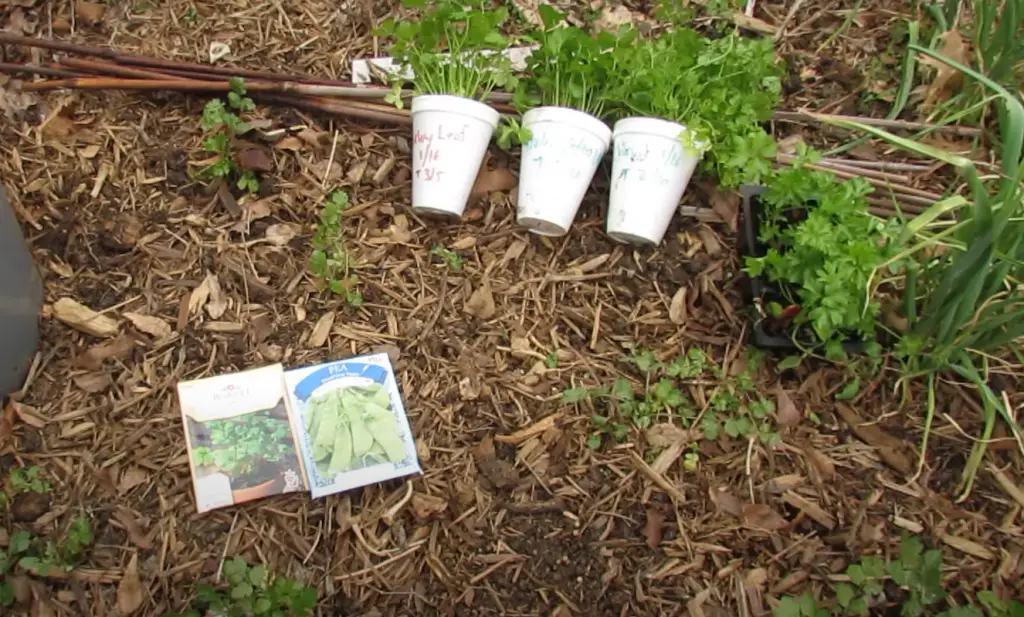
By following some basic guidelines, you can take advantage of all these benefits and grow healthier, tastier cilantro.
The Best Companion Plants for Cilantro
While cilantro is a great herb to have in your garden, it also works well with other plants. Here are some of the best companion plants for cilantro.
Legumes
Legumes, such as beans and peas, can be good companions for cilantro. Legumes are nitrogen-fixing plants, meaning they convert the air’s nitrogen into a form that is usable by other plants in the garden. This helps provide nutrients to surrounding plants, including your cilantro.
Additionally, legumes can help protect cilantro from pests like aphids or flea beetles, which may damage its leaves. It’s best to choose bush types of legumes rather than pole varieties since the latter will shade out the light needed by the cilantro to thrive. Examples of bush-type legumes that can be grown with cilantro include bush beans, bush snap peas, and garden peas. It’s also important to note that when planting legumes with cilantro, they should not be planted together in the same hole as this can result in competition for nutrients. Instead, plant them at least six inches apart to allow each plant enough room to grow. This will ensure your cilantro has ample access to sunlight and the nutrients it needs for a successful harvest.Leafy green vegetables
Leafy green vegetables are a great companion plant to grow alongside cilantro. These plants include lettuce, kale, spinach, and arugula. Not only do they provide an attractive contrast with the bright-green cilantro leaves, but they also thrive in cooler temperatures and benefit from the shade provided by cilantro. Growing these leafy greens next to your cilantro can help keep them hydrated during hot summer days and protect them from frost damage in winter months. Plus, as an added bonus, you’ll have easy access to fresh greens for salads and other recipes! As always, be sure to give all of your plants their own space so that they don’t compete for resources or crowd each other out. With a little extra care, you can enjoy a bounty of leafy greens and cilantro in your garden.
Tall Flowers
Tall flowers provide ample shade, and they can also be used to attract beneficial pollinators like bees and butterflies. Some of the best tall flower companions for cilantro are sunflowers, marigolds, nasturtiums, cosmos, hollyhocks, zinnias, and larkspur. These plants should be planted in an area with full sunshine to get the most benefit from their blooms.
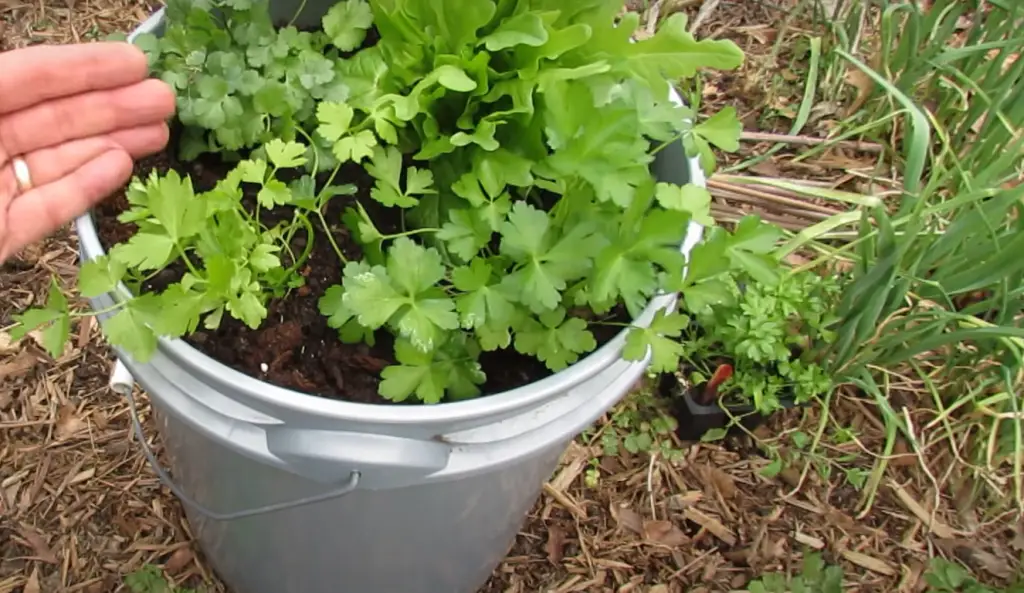
Make sure to provide plenty of water during dry periods so that your tall flower companions flourish alongside your cilantro. When planting near taller companions, it’s a good idea to give the cilantro some extra space – this will help it grow without becoming overwhelmed by its neighbors. Finally, be sure to provide plenty of organic matter to your soil – this will help both the tall flowers and cilantro grow strong and healthy.
Chervil
Chervil is an excellent companion plant for cilantro because it helps to attract beneficial insects. This herb is easy to grow and can be used fresh or dried in salads, sauces, soups, and other recipes. It has a delicate flavor that complements the bold taste of cilantro and will enhance any dish. When choosing chervil as a companion plant for cilantro, make sure you choose varieties with large leaves so that they don’t compete with each other for resources like sunlight and water. Plant your chervil on one side of the garden bed and your cilantro on the other, spacing them out a bit further than you would normally do if planting alone. This way both plants will have enough room to flourish without having to compete for resources. Water your chervil plants frequently and add some mulch around the base of each plant to help conserve moisture. As with all companion plants, make sure you check them regularly for signs of pests or disease. If necessary, treat any problems as soon as possible to keep your garden healthy and thriving!
Sweet Alyssum
Sweet alyssum is a great companion plant for cilantro. It has small, white or pink flowers that attract beneficial insects such as bees and ladybugs to your garden. These beneficial insects will help protect your cilantro from harmful pests and diseases, as well as pollinate the plants for increased yield.
Additionally, sweet alyssum helps to maintain soil moisture in hot climates, reducing the need for frequent watering. Planting sweet alyssum alongside your cilantro can be beneficial in many ways!Coreopsis
Coreopsis is a wonderful companion plant for cilantro. Its bright yellow flowers add colour to the garden and make it easier to locate herbs that are often hidden in the foliage of other plants. Coreopsis also attracts beneficial insects, such as honeybees, to your garden and helps keep away pests that might otherwise damage your cilantro. As an added bonus, coreopsis is drought-tolerant and can survive without much water or attention once established. Planting coreopsis near your cilantro will help ensure a healthy harvest all season long!
Beans
Beans are a great companion plant for cilantro. Not only do they provide nitrogen to the soil, but they also act as a living mulch that helps keep weeds away and retain moisture in the soil. For best results, try planting bush beans like ‘Topcrop’ or pole beans like ‘Kentucky Wonder’ near your cilantro plants. Make sure to give them plenty of space so they can spread out and reach their full potential.
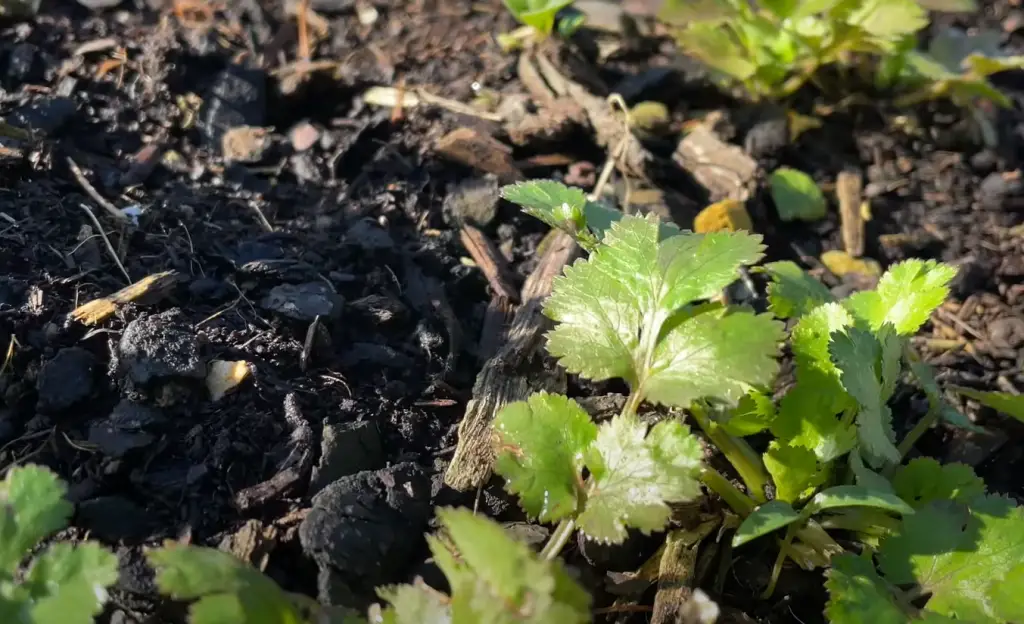
When harvesting your cilantro, make sure not to disturb any nearby bean vines as this could damage the roots and stunt their growth. Enjoy all the flavors these two plants have to offer!
Peas
Peas are one of the best companion plants for cilantro! They help improve soil fertility and provide nitrogen to the garden. Plant your peas close to your cilantro plants, but not too close—about a few inches away is ideal. Peas also have pretty flowers that will attract beneficial insects like ladybugs and hoverflies for added pest control. To maximize their success in the garden, make sure to add plenty of compost or organic matter to the soil before you plant them. It’s also helpful to stake taller varieties so they don’t get weighed down by their own vines. With a bit of care, you should be able to harvest plenty of sweet-tasting peas all season long!
Lupines
Lupines have long, multi-colored flower spikes that will add beauty and color to your garden. Lupines also help fix nitrogen in the soil, which is useful for other plants around them. To get the best results from lupines, make sure you provide plenty of compost or other organic matter when planting them. They do best in full sun and well-drained soil. When harvesting lupines, be careful not to harvest too early or late as this can reduce their yield significantly. With a bit of effort, you’ll be rewarded with beautiful flowers and a bountiful harvest season after season!
Cosmos
Cosmos is a great companion plant for cilantro, as they both attract beneficial insects like ladybugs and hoverflies. Cosmos are also fast-growing, so they’ll help smother weeds that may compete with your cilantro. Plant them near the base of your cilantro plants, but don’t let them touch each other – cosmos can sometimes be invasive! Make sure to water cosmos deeply at least once a week during dry spells in order to keep it blooming at its best. Cosmos will also add a splash of color to your garden – their bright flowers come in shades of pink, white, yellow, purple and even bicolored varieties. Enjoy these gorgeous flowers while adding an extra layer of protection for your cilantro!
Zinnias
Zinnias are a great companion plant for cilantro. They come in a wide variety of colors, so you can create stunning color combinations in your garden! Zinnias also attract pollinators which can help your cilantro thrive. Zinnias and cilantro both require similar soil types and growing conditions, making them an ideal pair.
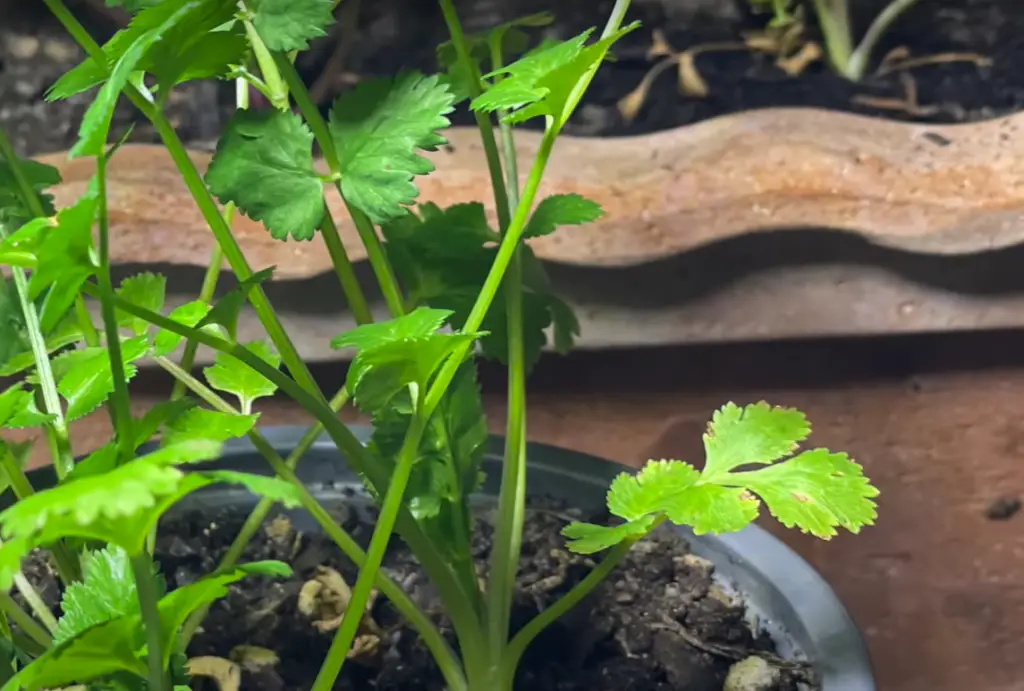
Make sure to keep them at least 12 inches apart though, as crowding could cause the cilantro to become too dry or shady. With the right amount of sun and water, zinnias will easily bloom alongside your cilantro throughout the summer months. Enjoy these cheerful blooms all season long!
Sunflowers
Sunflowers (Helianthus annuus) make attractive and useful companions for cilantro. They can provide shade to the delicate herb and help keep the soil moist. Sunflowers also attract pollinators, so plant a few near your cilantro to ensure it’s well-pollinated, helping you get the highest yields of flavorful leaves. It’s best to sow sunflower seeds directly in the garden as early as two weeks before the last frost. Plant them about 12-18 inches apart with plenty of room around your cilantro plants for their growth. Harvest sunflower heads when they are firm and dry; use them for birdseed or cut flowers.
Dill
Dill can provide shelter and protection for the herb, while also attracting beneficial insects to your garden. Dill has a strong scent that can help repel some pests, too. When planting dill near cilantro, it’s important to keep them at least 18 inches apart so they have enough room to grow without competing with each other for resources. Additionally, both plants prefer full sun and well-draining soil. If you give them what they need, they will thrive side by side in your garden!
Anise
Anise is a great friend of cilantro. This aromatic herb is most commonly used to add flavor and aroma to dishes and drinks, but it can ward off some of the pests that may bother your cilantro plants. As an added bonus, it also attracts ladybugs, lacewings, and hoverflies — all of which are natural pest controllers in your garden. Anise grows best in full sun and well-drained soil. It should be planted about 8 inches away from your cilantro plants for optimal spacing. Water your anise regularly until established; after that, water only when necessary. Harvest the leaves before the flowers appear for best results. Enjoy fresh or dried leaves as cooking spices — the flavor of anise is like licorice.
Potato
Cilantro and potatoes make good companion plants! Not only do they have similar soil and fertilizer requirements to cilantro, but potatoes also deter pesky pests like aphids, which can be damaging to cilantro. Planting potatoes near your cilantro can help keep the area free of pests while providing some extra nutrition in the form of nitrogen-rich foliage. When planting potatoes with your cilantro, just make sure that you give them plenty of space–potatoes need about 18 inches between rows or 10 inches between plants.
Bad Cilantro Companion Plants
Certain plants are just not good to keep near cilantro, or really any other plant. The following plants should be avoided when planting near cilantro.
Fennel
Fennel is a natural enemy of cilantro, and should not be planted near it. Fennel has an aggressive root system that will take up essential nutrients from the soil, leaving little for your cilantro to use.
Lavender, Rosemary, and Thyme
These herbs are also not good companions for cilantro. They tend to become overcrowded and compete with each other for space. Cilantro can also suffer from root rot when planted too close to these plants. [1]
Tips for Growing Cilantro
When it comes to growing cilantro, companion plants can be an invaluable tool. While cilantro is a tasty and easy-to-grow herb, it can also benefit from companions that provide shade, prevent weeds, attract pollinators, or act as natural pest repellents.
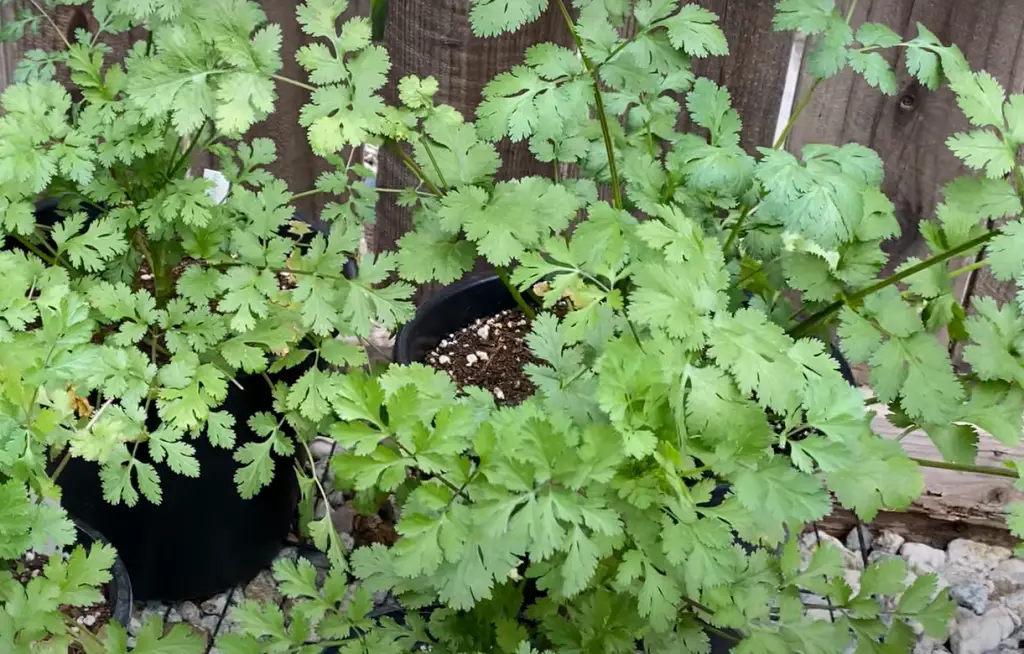
Here are our top tips for planting companion plants alongside your cilantro.
- Planting high-growing companion plants near your cilantro will give the herb some much-needed shade in hot climates. Sunflowers and corn are great options here.
- Opt for low-growing companion plants if you live in a cooler area or want to keep your garden compact. Chives, zucchini, and parsley make great options.
- Plant herbs like dill, fennel, or oregano with your cilantro to naturally repel pests and attract pollinators.
Garlic and onions are also popular companion plants for cilantro as they can help improve the flavor of the herb. - Additionally, these two vegetables act as natural fungicides and will protect your cilantro from mold and mildew.
If you’re looking for a companion plant that will both improve the flavor of your cilantro and act as a pest repellent, try planting borage alongside it. Borage leaves have a cucumber-like taste when eaten raw, while its flowers are known to attract honeybees – a great bonus for your garden.
No matter what companion plants you choose, make sure to research their compatibility with cilantro before planting them together. With the right combination of companions, you’ll soon be enjoying an abundant harvest of flavorful cilantro!
FAQ
What should I not plant next to cilantro?
When planting companion plants for cilantro, you want to avoid any that may compete with it for nutrients or water. Some of the plants to avoid include lavender, rosemary, thyme, and fennel as they can take too much away from your cilantro plant’s health. Additionally, some other vegetables like cabbage and broccoli will overpower the aroma of cilantro if grown near it. Finally, be sure not to crowd any plant in close proximity to another since this can limit airflow and stunt growth. [2]
What can I plant next to cilantro?
If you are looking for companion plants to pair with your cilantro, there are many options available. Here is a selection of complementary plants that can work well when planted near cilantro:
- Tomatoes – Tomatoes and cilantro have an affinity for each other and make a great team in the garden. The tomato provides shade to the delicate cilantro leaves while also benefitting from its taste-enhancing properties.
- Eggplants – Eggplants can be planted near cilantro, as the eggplant’s wide leaves provide a shade canopy for the cilantro. Pairing eggplants with cilantro also brings out the best in both plants, as their flavors complement each other well.
- Bell peppers – Bell peppers and cilantro pair nicely together and help to repel pests from one another. Plant them close together for maximum pest protection.
- Potatoes – Potatoes and cilantro pair nicely together and help to repel pests from one another. Plant them close together for maximum pest protection, and the potatoes will benefit from the flavor-enhancing properties of the cilantro. [3]
By combining these plants in your garden, you will ensure that all your plants grow healthy and strong. With proper care, they will produce flavorful fruits and vegetables that you can enjoy all summer long!
Can cilantro and mint be planted together?
Yes! Cilantro and mint make a great combination when planted together. They love the same temperatures, have similar watering needs, and both prefer part shade.
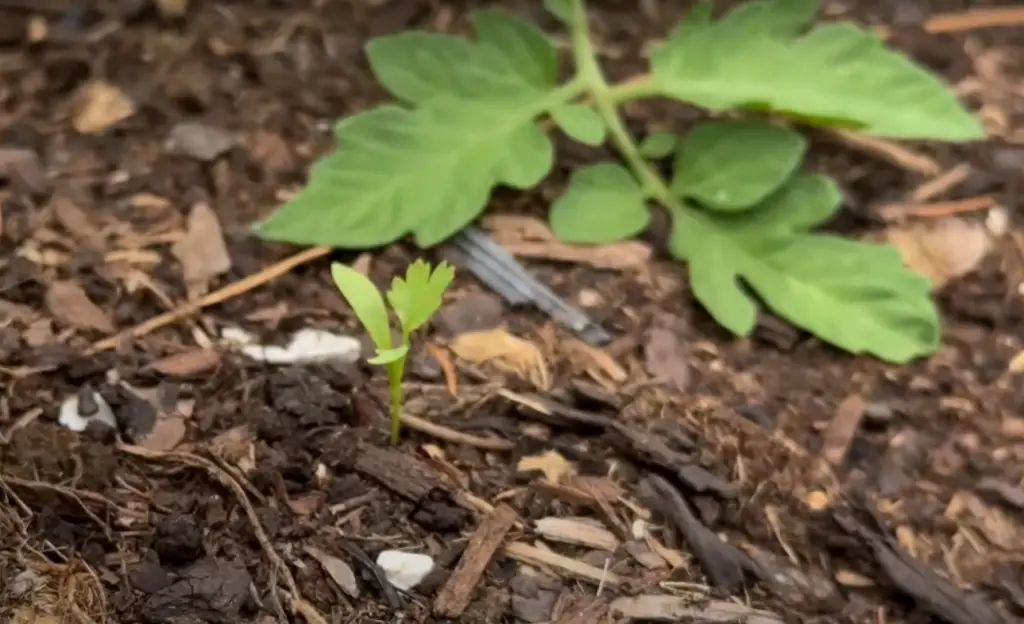
Mint can help to repel certain pests from cilantro, while cilantro’s fragrant foliage may also mask the smell of other herbs that attract insects. Be sure to plant them in separate containers or planters though so that the mint doesn’t take over your cilantro patch! [4]
Does cilantro like direct sunlight?
Cilantro is an easy-to-grow herb that thrives in both partial and full sun. It prefers temperatures between 65°F and 70°F, with a minimum of six hours of sunlight per day to produce its best foliage. Direct sunlight is great for cilantro, but it also benefits from some afternoon shade in warmer climates. When planting your cilantro, be sure to give it enough space so that the leaves are not crowded together and can get plenty of light. Additionally, you should keep the soil consistent in moisture; too much or too little water can cause stunted growth or even death. [5]
When it comes to companion plants for cilantro, there are many options available. Some plants like parsley, dill, lavender, and basil are known to provide natural pest control and also help keep cilantro healthy. Additionally, you can use companion plants to attract beneficial insects such as ladybugs or lacewings which prey on aphids and other pests that can damage your cilantro crop. Finally, certain vegetables like tomatoes, peppers, and carrots make great companions for cilantro since their roots don’t compete with one another for nutrients in the soil. Be sure to research what will work best for your environment before planting!
Useful Video: The Benefits of Welding Automation for Your Health
Conclusion
So, if you want to make the most of your cilantro plants and help them thrive, it’s worth considering companion planting. Companion plants can help protect your cilantro from pests, provide beneficial nutrients for growth and help attract helpful insects. Some of the best companions for cilantro include tomatoes, peppers, carrots, asparagus and marigolds. As always with companion planting, research before planting to ensure the plants you choose work well together and will benefit each other. Happy companion planting!
References:
- https://www.thespruce.com/companion-plants-for-cilantro-5074346
- https://makeitseasonal.com/cilantro-companion-planting/
- https://www.gardenerbasics.com/blog/cilantro-companion-plants
- https://dianfarmer.com/7-herbs-that-grow-well-together-in-pots-and-containers/
- https://bonnieplants.com/blogs/how-to-grow/growing-cilantro





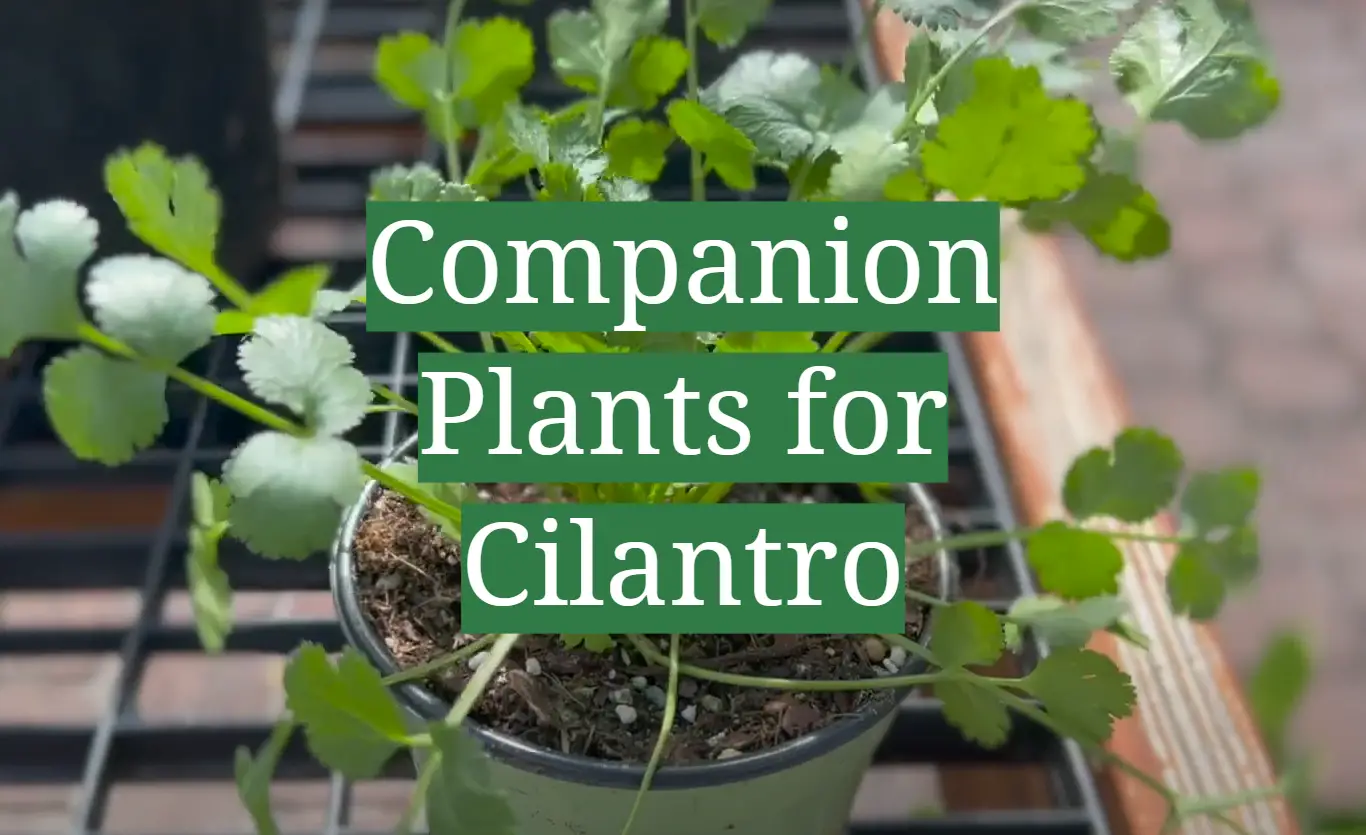




Leave a Reply
View Comments